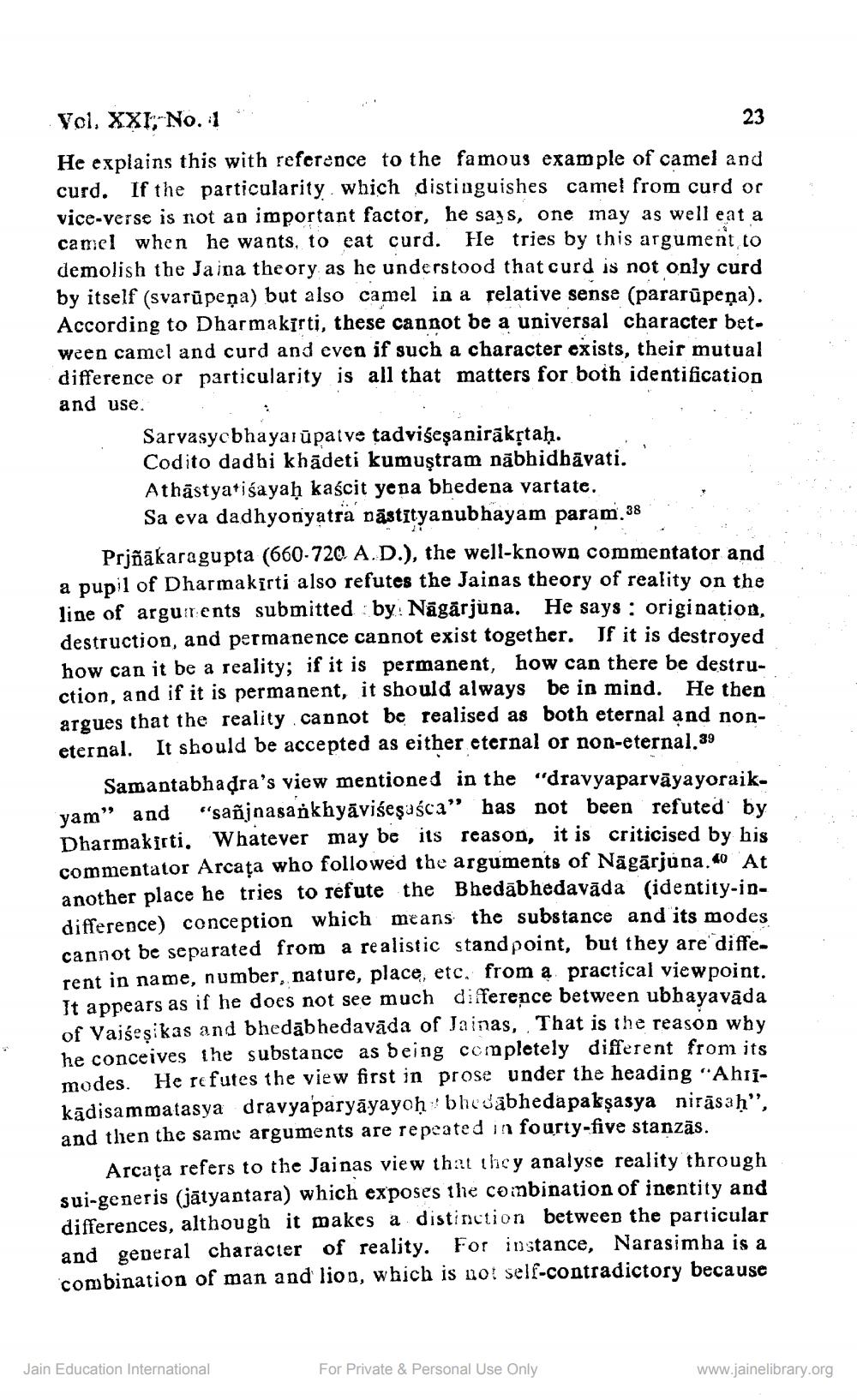________________
23
Vol. XXI, No. 1 He explains this with reference to the famous example of camel and curd. If the particularity which distinguishes camel from curd or vice-verse is not an important factor, he says, one may as well eat a camel when he wants, to eat curd. He tries by this argument to demolish the Jaina theory as he understood that curd is not only curd by itself (svarūpeņa) but also camel in a relative sense (pararūpeṇa). According to Dharmakirti, these cannot be a universal character bet. ween camel and curd and even if such a character exists, their mutual difference or particularity is all that matters for both identification and use. .
Sarvasycbhayarūpatve tadvisesanirākştah. Codito dadhi khādeti kumuştram nābhidhāvati. Athāstyatiśayah kaścit yepa bhedena vartate
om 38 Sa eva dadhyonyatı
ubhayam param.38
.
.
Prjñākaragupta (660-720 A.D.), the well-known commentator and a pupil of Dharmakirti also refutes the Jainas theory of reality on the line of arguirents submitted by Nāgārjuna. He says : origination, destruction, and permanence cannot exist together. If it is destroyed how can it be a reality; if it is permanent, how can there be destruction, and if it is permanent, it should always be in mind. He then argues that the reality.cannot be realised as both eternal and noneternal. It should be accepted as either eternal or non-eternal.39
Samantabhadra's view mentioned in the "dravyaparvāyayoraikyam" and "sañjnasarkhyävišeşaśca" has not been refuted by Dharmakirti, Whatever may be its reason, it is criticised by his commentator Arcața who followed the arguments of Nāgārjuna. 40 At another place he tries to refute the Bhedābhedavāda (identity-indifference) conception which means the substance and its modes cannot be separated from a realistic stand point, but they are different in name, number, nature, place, etc. from a practical viewpoint. It appears as if he does not see much difference between ubhayavāda of Yaisesikas and bhedābhedavāda of Jainas, That is the reason why he conceives the substance as being completely different from its modes. He refutes the view first in prose under the heading "Ahiikādisammatasya dravya'paryāyayoḥ bhedabheda pakşasya nirāsah". and then the same arguments are repeated in fourty-five stanzās.
Arcața refers to the Jainas view that they analyse reality through sui-generis (jātyantara) which exposes the combination of inentity and differences, although it makes a distinction between the particular and general character of reality. For instance, Narasimha is a combination of man and lion, which is not self-contradictory because
Jain Education International
For Private & Personal Use Only
www.jainelibrary.org




